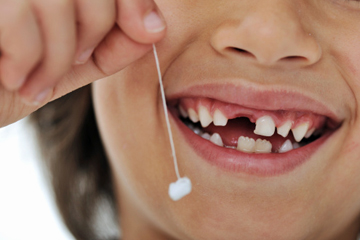
If you have teeth, chances are that you’ve had gingivitis, that you will in the future or that you have it right now. It’s one of the most common diseases of the periodontis (literally, the stuff "around the teeth"). Gingivitis is also deceptively unassuming.
Gingivitis is an inflammation of the gums, or gingiva: the fibrous tissue that holds teeth in their sockets and attaches them to the jawbone. The disease is caused by certain strains of bacteria living in the mouth. These microbes constantly react with mucus that you secrete and sugars from your food to form a sticky film called plaque. Plaque coats the surface of teeth and gums, and acids released as the bacteria digest the sugars can eat away at those surfaces.
Making matters worse, if plaque is left to sit for too long, it combines with the minerals and proteins in saliva to form a substance called tartar. Tartar is like pumice: Hard yet porous, it harbors bacteria in crevices beyond a toothbrush’s reach. Tartar can extend below the gum line, allowing bacteria into the sensitive pockets between the gums and a tooth.
Irritated by plaque, tartar and bacterial secretions, the gums turn red and puffy, bleeding easily — and that’s gingivitis. Bacterial acids eventually erode gum, tooth and bone tissue. Infection, called periodontitis, may set in, leading to the formation of painful pus pockets under and around the tooth. Left untreated, periodontitis destroys the tissue, and the tooth will be lost.
The good news is that this ugly scenario can be reversed at every stage but the last, and that an ounce of prevention beats a ton of cure. Conscientious brushing and flossing will remove plaque as quickly as it forms. Any toothpaste approved by the American Dental Association will do. All of these contain fluoride, which can help keep teeth’s enamel strong by restoring calcium and phosphorus. For added protection, you might try an anti-plaque toothpaste that contains zylitol. Zylitol is a natural sugar that some oral bacteria can’t metabolize, reducing their acid output. Tartar-control toothpastes can help by dissolving calcium leached from teeth and bone before it can accrue into tartar.
That being said, technique and diligence are the most important components of dental care, and flossing plays a critical role as well. Even the best toothbrush and toothpaste that science have to offer can’t get between teeth and under the gumline to remove the plaque that flossing can, so you should also floss once a day to treat and prevent further gingivitis.
Finally, let your dentist check things out by scheduling dental exams every six to 12 months. Unlike plaque, tartar requires professional cleaning to remove, which may leave your gums sore for a day or so — incentive to brush and floss daily to keep the tartar from forming again. Stubborn infections may require antibiotics to knock out the trouble-causing bacteria.





